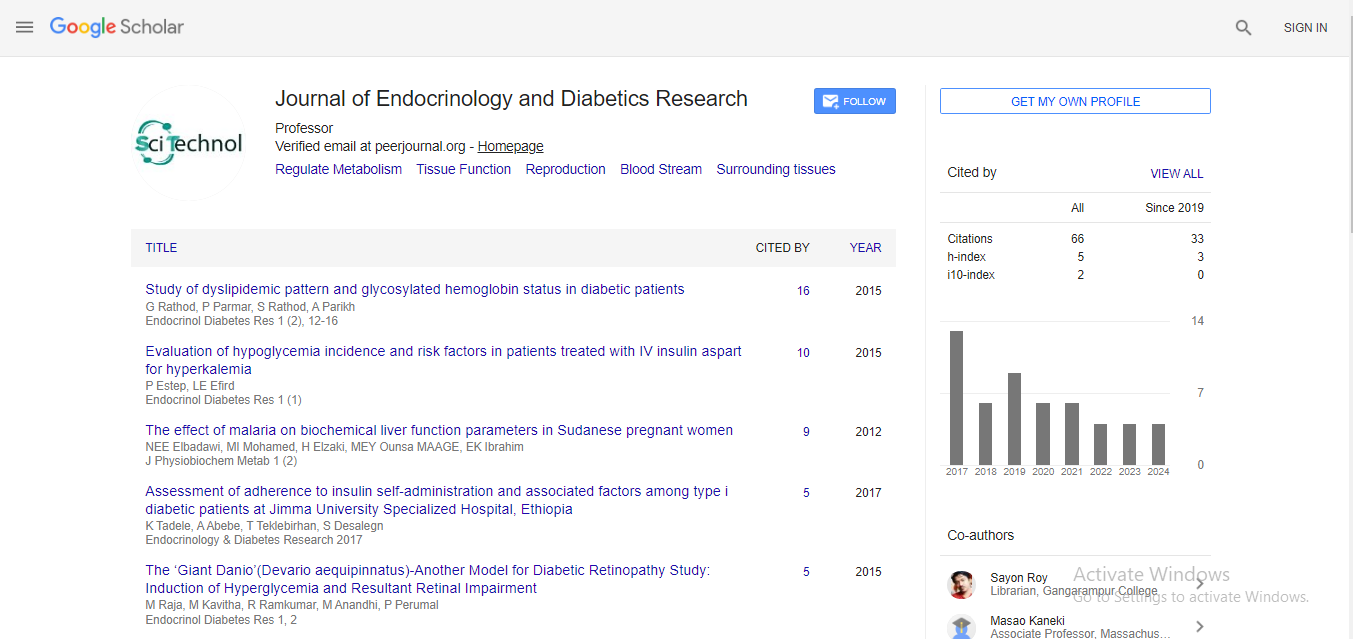A rare early-onset neonatal case of birk-barel syndrome presenting severe obstructive sleep apnea
Li Jinrog and Li YiFei
Sichuan University West China Second Hospital, China
: Endocrinol Diabetes Res
Abstract
Background: Birk-Barel syndrome, also known as KCNK9 imprinting syndrome, is a rare fertility disorder. And the main clinical manifestations include congenital hypnotic, craniofacial malformation, developmental delay, and intellectual disability. Generally, such patients could be diagnosed beyond the infant period. Moreover, the delayed diagnosis might lead to a poor prognosis of rehabilitation therapy. However, neonatal obstructive sleep apnoea (OSA) was seldom reported in Birk-Barel syndrome. Here, we reported a severe neonatal OSA case induced by Birk-Barel syndrome, resulting in an early diagnosis with improved outcomes by integrative management. Case presentation: The proband was a neonate presenting with recurrent severe OSA, with craniofacial deformity and congenital muscle hypotonia. Bronchoscopy examinations indicated a negative finding of pharyngeal and bronchus stenosis, while laryngomalacia had been observed. Whole exon sequencing demonstrated a c. 710C>A heterozygous variant resulting in a change of amino acid (p.A237D). This variant resulted in a change of amino acid sequence, affected protein features and changed splice site leading to a structural deformation in KCNK9 protein. This p.A237D variant also affected the crystal structure on the p.G129 site. Additionally, we used the mSCM tool to measure the free energy changes between wild-type and mutant protein, which indicated highly destabilizing. Conclusion: This case report expands the understanding of Birk-Barel syndrome and indicates that OSA could serve as the on-set manifestation of Birk-Barel syndrome. Adequate WES assessment promotes early intervention and improves the prognosis of neurological disorders in young children.
 Spanish
Spanish  Chinese
Chinese  Russian
Russian  German
German  French
French  Japanese
Japanese  Portuguese
Portuguese  Hindi
Hindi 


